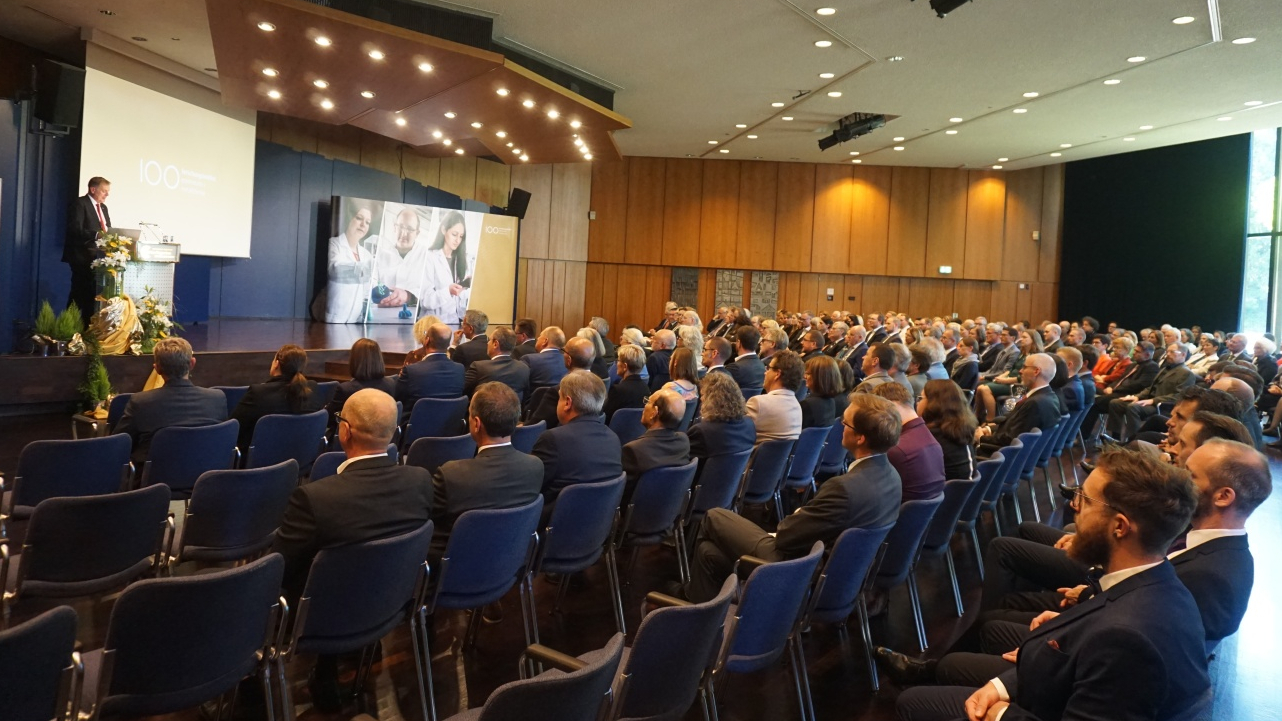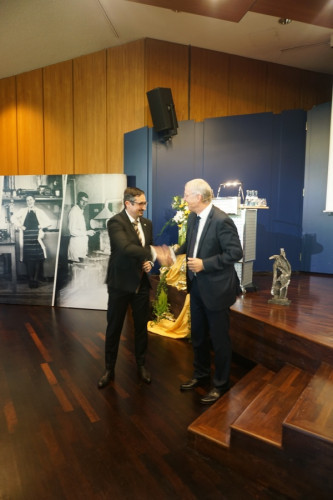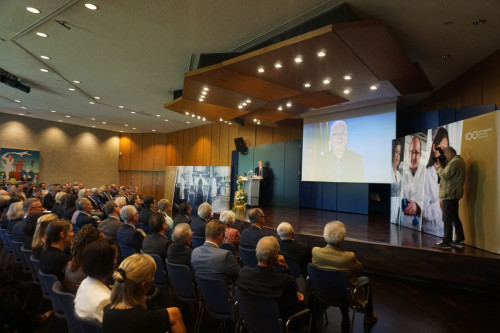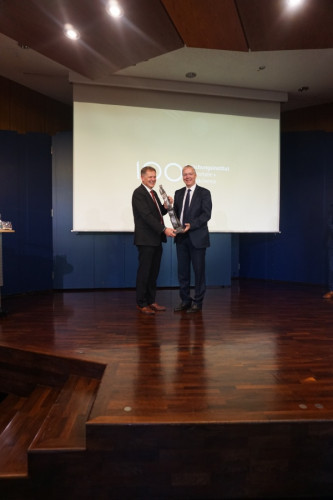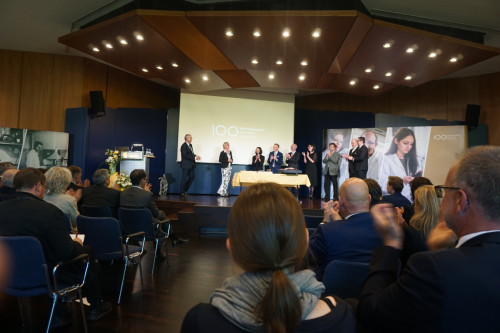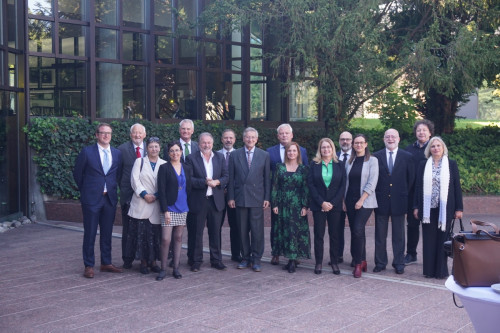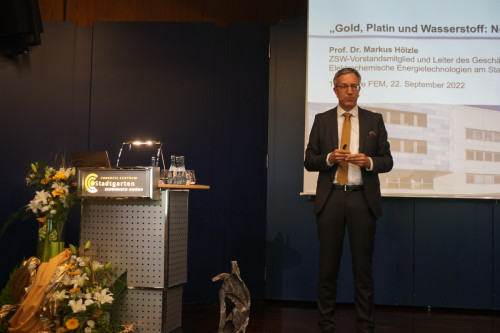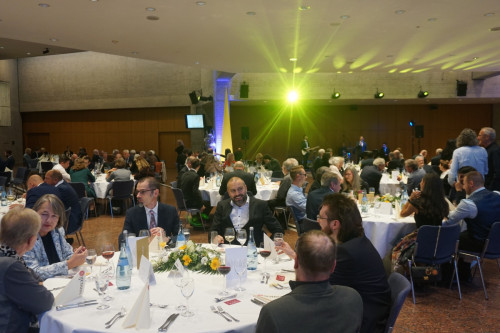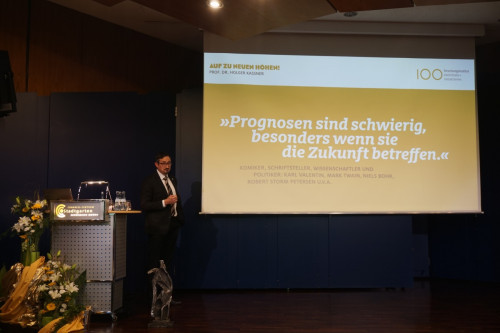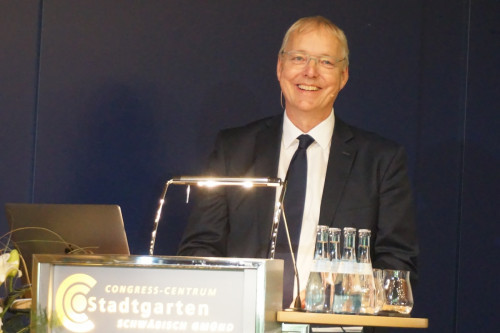On September 22, the fem in Schwäbisch Gmünd had two reasons to look back. The institute celebrated its 100th anniversary, and at the same time there was an official change of leadership at the institute. After 28 successful years with Dr. Andreas Zielonka at the helm, his successor Prof. Holger Kaßner will now head the renowned research institute.
The history of the former Royal Technical College for the Precious Metals Industry began on an autumn day in 1922. Today, the Research Institute for Precious Metals and Metal Chemistry (fem) has almost 100 employees and is an internationally renowned institution for many technical fields - from metallurgy and electrochemistry to light metal and plasma surface technology and analytics. A department for electrochemical energy systems was only recently founded because the institute is set to play an important role in the future development of technologies for the energy transition.
At the event, which was well attended by around 200 invited guests, a video message from Baden-Württemberg's Minister President Winfried Kretschmann was first played. He associated the institute with the proverbial Swabian inventive spirit. He said that the fem transfers innovations from basic research to industry and makes an important contribution to the future viability of Baden-Württemberg and Germany, e.g. with the recycling of rare earths. He concluded by praising Dr. Zielonka for almost 30 years at the fem. State, regional and city politicians joined him in paying tribute to Zielonka's life's work. Schwäbisch Gmünd's Lord Mayor Richard Arnold presented Dr. Zielonka with a metal sculpture by the artist Dietz as a thank you. The man who has been at the helm of the research institute since 1995 (initially together with Dr. Hermann Jehn) received further farewell gifts from the fem department heads, including Dr. Heidi Willing and Dr. Seniz Sörgel. This was followed by the ceremonial handover of the baton to Zielonka's successor, Prof. Dr. Holger Kaßner, in the form of a conductor's baton. Prof. Kaßner was most recently Professor of Materials and Design at the TU Aschaffenburg and also headed the Steibeis Transfer Center Product Development - Manufacturing Technology - Materials (PFW). An important station on his career path was also Lufthansa Technik in Hamburg, where he worked for over seven years, including as Head of Engineering.
Prof. Dr. Markus Hölzle, Member of the Board of the Centre for Solar Energy and Hydrogen Research Baden-Württemberg (ZSW) in Ulm, gave the keynote speech. The topic was "Gold, platinum & hydrogen: Nobel will save the world". Prof. Hölzle presented various future scenarios with a purely electric future and a future with energy from electricity and hydrogen. This revealed the enormous potential of hydrogen, which can be liquefied and shipped or transported through pipelines. With H2 from Saudi Arabia, a kilowatt-hour price of 66 cents would already be possible, he calculated. Hydrogen would therefore be cheaper than oil. However, he emphasized that an H2 network is ultimately indispensable for a hydrogen economy.
There was already talk of "huge investments" in the hydrogen economy at the Surface Days. Prof. Hölzle confirmed this once again, but also pointed out the huge challenges for research, industry and society that the energy transition entails. Before the evening program began with dinner and dancing, the new director of the institute, Prof. Kaßner, introduced himself to the participants with a presentation entitled "Towards new heights". He presented the last two hundred years as cycles that lead to profound changes at ever shorter intervals. According to him, we are now at such a transition again - and he is convinced that science must be the basis and driver of this transition.

